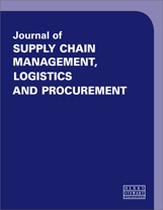How to maximise manual labour productivity in warehouse operations
Abstract
This paper discusses how to maximise manual labour productivity in warehouse operations by utilising a mix of tools, teams and techniques to help warehouses improve worker efficiency, safety and retention while putting people where they can make the most impact. Associates are critical to warehouse operations, and warehouses are seeking ways to maximise labour efficiencies while also reducing costly churn. To be successful, warehouses must solve one of the most basic challenges: how to staff hard-to-fill and hard-to-do jobs. Warehouses are known for being dirty, dull and dangerous. Turnover is high and the impact of labour challenges is enormous. Robots work hard so people can work smart. Warehouses that implement advanced technology realise enormous benefits, including up to 4x more throughput. The robots-as-a-service (RaaS) business model allows warehouses to implement advanced AI technology without an enormous upfront spend. The best use of advanced tech is to support the human workforce and unlock the best solution to attaining and retaining warehouse labour. Jobs become reimagined by ‘up-levelling’ warehouse work and labour productivity increases. Advanced artificial intelligence (AI) captures data that helps to forecast inbound parcel volume, understand the profile of the parcels, predict throughput required to meet business goals and more. Robotic solutions offer consistent and reliable performance in the warehouse, delivering dependable, round-the-clock productivity, so that humans do not have to be burdened with monotonous, repetitive robot work.
The full article is available to subscribers to the journal.
Author's Biography
Jim Liefer is the Chief Executive Officer of Ambi Robotics where he is responsible for all facets of the business. Jim brings more than 35 years of operational leadership and technology development experience from established Fortune 50 companies to high-growth Silicon Valley start-ups. Prior to Ambi Robotics, Jim served as Chief Executive Officer of Kindred AI which was acquired by Ocado Group. During his tenure with Kindred AI, Jim brought distinct artificial intelligence (AI)-enabled robotic solutions to the warehouses and fulfilment centres of global retailers, building solutions from concept to customer deployment. Before Kindred he was the Chief Operations Officer of One Kings Lane, Vice President of Operations at Walmart.com and Vice President of Technology at UPS. With One Kings Lane and Walmart, Jim successfully developed processes and systems that scale for rapid growth and lower costs. During his tenure at UPS he was responsible for global supply chain technology systems that continue to thrive at UPS today.
Citation
Liefer, Jim (2023, June 1). How to maximise manual labour productivity in warehouse operations. In the Journal of Supply Chain Management, Logistics and Procurement, Volume 5, Issue 4. https://doi.org/10.69554/LELM2005.Publications LLP
